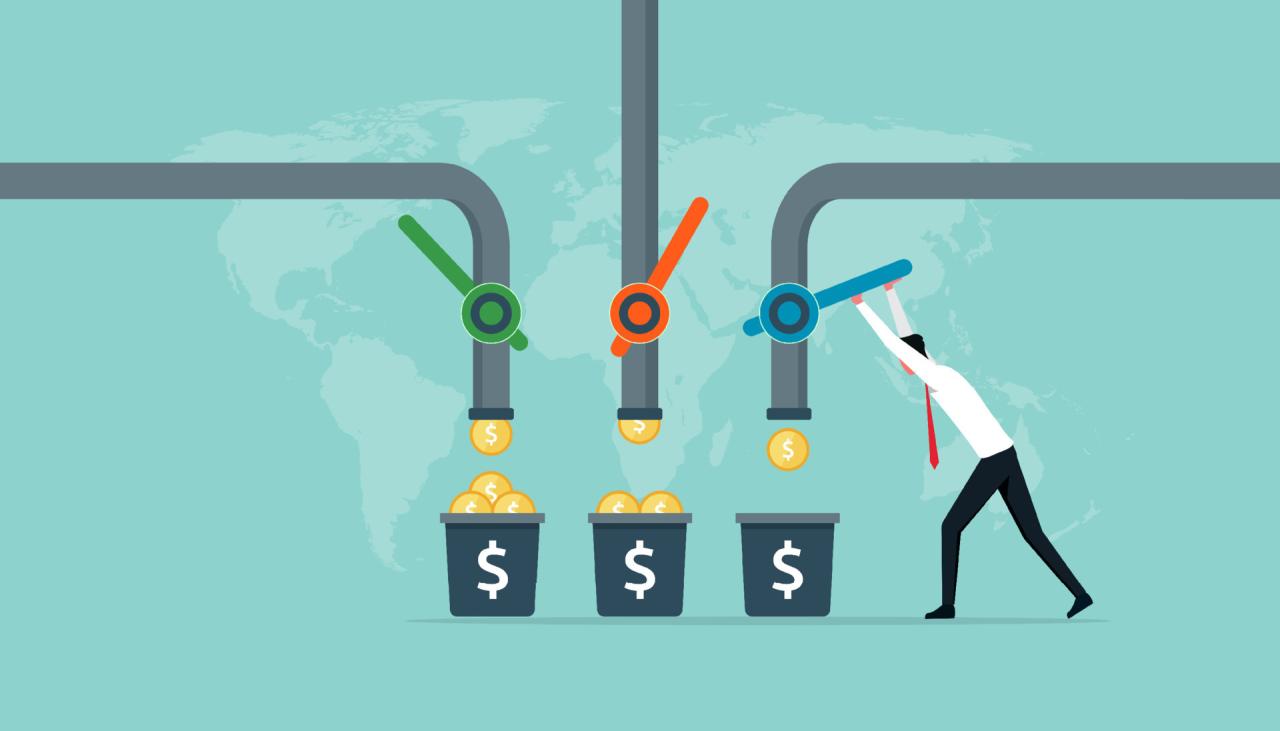The dream of earning money while you sleep, travel, or pursue your passions is not merely a fantasy; it’s the core promise of passive income. In an increasingly dynamic economic landscape, relying solely on a single active income stream can be precarious. Building passive income streams offers a powerful pathway to financial freedom, providing an extra layer of security, accelerating wealth accumulation, and granting the flexibility to live life on your own terms. This comprehensive article delves into the diverse world of passive income, dissecting its fundamental principles, exploring various lucrative avenues, outlining actionable strategies for creation, and highlighting the crucial considerations for sustaining these valuable financial pipelines to secure your future.
Defining Passive Income

Before exploring specific methods, it’s essential to understand what truly constitutes passive income and distinguish it from active earnings. At its essence, passive income is money earned regularly with minimal ongoing effort after the initial work or investment is complete.
A. Passive vs. Active Income
The distinction between these two forms of income is crucial for strategic financial planning.
A. Active Income:
A. Definition: Money earned directly from performing a service or task, typically requiring your direct time and effort.
B. Examples: Salaries, hourly wages, freelance work where you exchange time for money, commissions.
C. Characteristics: Direct correlation between effort and earnings; often capped by the number of hours you can work; stops when you stop working.
B. Passive Income:
A. Definition: Money earned with little to no ongoing effort, often after an initial investment of time, money, or both. It can flow continuously whether you are actively working or not.
B. Examples: Rental income from properties, dividends from stocks, royalties from intellectual property, interest from savings, profits from an automated online business.
C. Characteristics: Decoupled from direct hourly effort; potential for scalability; continues even when you’re not actively engaged.
B. The Spectrum of Passivity
It’s important to note that very few income streams are 100% “passive” from day one. Most require significant upfront effort, investment, or ongoing maintenance. The goal is to maximize the “passive” component over time.
A. High Initial Effort/Investment, Low Ongoing Effort: Creating a successful online course, writing a book, developing a software product. Once created, they generate income with minimal daily intervention.
B. Moderate Initial Effort/Investment, Moderate Ongoing Effort: Managing a rental property. Requires initial capital and some ongoing tenant/maintenance management, but less direct effort than a full-time job.
C. Low Initial Effort/Investment, Low Ongoing Effort (but often lower returns): High-yield savings accounts, certain dividend stocks. These require minimal setup and ongoing effort, but typically offer lower growth potential without significant capital.
C. Why Pursue Passive Income?
The benefits extend far beyond simply earning more money.
A. Financial Freedom: Creates a buffer against economic uncertainties, reduces reliance on a single job, and provides the option to work less or retire earlier.
B. Wealth Acceleration: Allows your money to work for you, leveraging the power of compounding to grow your net worth faster than active income alone.
C. Diversification of Income: Reduces risk by spreading your income sources, protecting you if one stream is disrupted.
D. Flexibility and Lifestyle: Grants you the freedom to pursue passions, travel, spend more time with family, or simply enjoy life without being tied to a traditional work schedule.
E. Inflation Hedge: Some passive income streams (like rental income) can adjust with inflation, helping to maintain your purchasing power.
Diverse Avenues for Building Passive Income Streams
The opportunities for generating passive income are vast, catering to various risk appetites, skill sets, and capital levels.
A. Investment-Based Passive Income
This category involves leveraging existing capital to generate returns.
A. Dividend Stocks:
A. Mechanism: Invest in shares of companies that regularly distribute a portion of their earnings to shareholders as dividends.
B. Pros: Can provide a consistent income stream; potential for capital appreciation; highly liquid (can sell shares easily).
C. Cons: Stock market volatility means share price can fluctuate; dividends are not guaranteed and can be cut; requires research to find stable dividend payers.
B. Bond Interest:
A. Mechanism: Lending money to governments or corporations in exchange for regular interest payments.
B. Pros: Generally lower risk than stocks (especially government bonds); predictable income stream.
C. Cons: Lower returns compared to stocks; interest rates can fluctuate; inflation can erode the real value of fixed payments.
C. High-Yield Savings Accounts & Certificates of Deposit (CDs):
A. Mechanism: Parking cash in accounts that offer higher interest rates than traditional savings accounts.
B. Pros: Very low risk; principal is typically FDIC/LPS insured; easy liquidity.
B. Cons: Returns often barely keep pace with or lag behind inflation; not designed for significant wealth growth.
D. Real Estate Investing (Rental Properties):
A. Mechanism: Purchasing properties (residential or commercial) and renting them out to tenants for monthly income.
B. Pros: Potential for substantial cash flow; property appreciation over time; leverage (using mortgages); tax benefits (depreciation).
C. Cons: Requires significant upfront capital or debt; can be management-intensive (tenant issues, maintenance); illiquid; market downturns can impact values.
E. Real Estate Investment Trusts (REITs):
A. Mechanism: Companies that own, operate, or finance income-generating real estate. They trade like stocks on exchanges and are legally required to distribute a large percentage of their income as dividends.
B. Pros: Diversification in real estate with less capital; highly liquid; often high dividends; no direct management.
C. Cons: Subject to stock market volatility; no direct control over properties; not as “passive” as direct ownership might appear if actively trading.
B. Business-Based Passive Income
These involve setting up systems or businesses that generate revenue with minimal ongoing intervention.
A. Creating Digital Products (Online Courses, E-books, Software):
A. Mechanism: Developing and selling products that can be replicated and distributed digitally at scale.
B. Pros: High-profit margins (low replication cost); global reach; once created, sales can be largely automated.
C. Cons: Significant upfront time and effort for creation; requires marketing and sales efforts; competition; need for updates.
B. Affiliate Marketing:
A. Mechanism: Promoting other companies’ products or services and earning a commission on sales made through your unique referral link.
B. Pros: No need to create your own product; low startup costs; can be highly scalable.
C. Cons: Relies on audience trust; requires consistent content creation (blogs, videos); commissions can be low; reliance on other companies’ products.
C. Blogging or YouTube (with advertising/sponsorships):
A. Mechanism: Creating valuable content that attracts a large audience, generating income through ads displayed on your platform or through sponsorships.
B. Pros: Can be highly scalable; leverages your passion/expertise; builds an audience and brand.
C. Cons: Requires significant upfront time and effort to build an audience; highly competitive; income can be unpredictable; reliance on ad networks.
D. Automated E-commerce (Dropshipping, Print-on-Demand):
A. Mechanism: Selling products online where a third party handles manufacturing, storage, and shipping (dropshipping) or printing and shipping (print-on-demand).
B. Pros: Low upfront inventory costs; global reach; can be highly automated.
C. Cons: Requires marketing and customer service; reliance on suppliers; thin margins in some cases; intense competition.
E. Rental of Assets (e.g., Car, Equipment, Storage Space):
A. Mechanism: Renting out assets you own when not in use (e.g., renting out a spare room on Airbnb, car on Turo, storage space).
B. Pros: Utilizes existing assets; can generate quick income.
C. Cons: Requires some management and maintenance; wear and tear on assets; potential liability issues.
C. Financial Arbitrage and Other Niche Methods
A. High-Interest Debt Refinancing (Arbitrage):
A. Mechanism: While not strictly passive, strategically refinancing high-interest debt (e.g., credit cards) to a lower-interest personal loan or balance transfer can free up significant cash flow, which can then be invested or saved, effectively “earning” the interest saved.
B. Pros: Immediate financial relief; reduces overall debt burden.
C. Cons: Requires good credit; temptation to accrue new high-interest debt.
B. Automated Trading (Forex, Stocks):
A. Mechanism: Using algorithms or expert advisors (EAs) to execute trades based on predefined rules.
B. Pros: Removes emotional bias; can operate 24/7; potential for high returns.
C. Cons: Very high risk; requires significant knowledge/testing; capital can be lost quickly; susceptible to market changes.
C. Vending Machines:
A. Mechanism: Owning and operating vending machines in high-traffic locations.
B. Pros: Low interaction once set up; predictable income.
C. Cons: Requires initial investment; periodic restocking and maintenance; location scouting.
Strategic Steps to Build Your Passive Income Streams

Building effective passive income streams requires a structured approach and strategic thinking.
A. Assess Your Resources and Risk Tolerance
A. Capital: How much money can you invest upfront? Some streams are capital-intensive (real estate), others are time-intensive (digital products).
B. Time: How much time can you dedicate initially to setup and learning?
C. Skills: What are your existing skills (writing, programming, investing, sales) that you can leverage?
D. Risk Tolerance: Are you comfortable with market volatility (stocks) or prefer lower-risk, lower-return options (high-yield savings)?
B. Choose Your Initial Stream(s)
Don’t try to build too many streams at once. Focus on one or two, master them, and then diversify.
A. Start Small: Begin with methods that have lower barriers to entry or less capital requirement.
B. Align with Strengths: Pick streams that align with your existing skills, interests, or financial capacity. This increases your chances of success and enjoyment.
C. Research Thoroughly: Before investing time or money, deeply research the chosen passive income method. Understand its mechanics, typical returns, and potential pitfalls.
C. Focus on Automation and Scalability
The key to passivity is minimizing ongoing effort.
A. Leverage Technology: Use tools and platforms that automate sales, marketing, and distribution for digital products or e-commerce.
B. Outsource Tasks: As income grows, consider outsourcing recurring tasks (e.g., property management, customer service for digital products, content editing).
C. Create Systems: Document your processes so they can be easily replicated or handed off to others.
D. Reinvest Your Earnings
To accelerate growth, especially in the early stages, reinvest the passive income you generate back into your streams.
A. Compound Growth: Reinvesting dividends, rental profits, or digital product sales back into more assets or advertising can significantly amplify your returns over time.
B. Expand Your Portfolio: Use initial passive income to fund new streams, diversifying your income sources.
E. Monitor and Optimize
Passive doesn’t mean “set it and forget it” entirely.
A. Regular Review: Periodically review the performance of your passive income streams. Are they meeting your expectations?
B. Adapt to Market Changes: Markets evolve. Be prepared to update your digital products, adjust your rental rates, or rebalance your investment portfolio.
C. Troubleshooting: Address any issues promptly, whether it’s a slow-performing investment or a problem with an automated system.
Important Considerations and Potential Pitfalls
While highly rewarding, building passive income streams is not without its challenges.
A. Initial Effort and Investment are Required
A. No “Get Rich Quick”: Passive income is often a “get rich slow” strategy. It requires significant upfront effort, time, or capital before it becomes truly passive.
B. Learning Curve: Each method has its own learning curve. Be prepared to dedicate time to education and experimentation.
B. Risk Management
Every passive income stream carries some form of risk.
A. Market Risk: Investments (stocks, bonds, real estate) are subject to market fluctuations.
B. Business Risk: Digital products or e-commerce ventures can fail due to competition, poor marketing, or lack of demand.
C. Liquidity Risk: Some assets (e.g., real estate) are not easily converted to cash quickly.
D. Tenant Risk: For rental properties, bad tenants or vacancies can erode profits.
E. Regulatory Risk: Changes in laws (e.g., short-term rental regulations, tax laws) can impact profitability.
C. Taxes
Passive income is still taxable.
A. Understand Tax Implications: Different types of passive income are taxed differently. Research the tax implications for each stream (e.g., capital gains, ordinary income, depreciation benefits for real estate).
B. Consult a Professional: A tax advisor can help you optimize your tax strategy for passive income and ensure compliance.
D. Scalability Limitations
Some passive income streams have inherent scalability limits. A single rental property, for instance, generates a fixed income, whereas a digital product can theoretically sell infinitely.
E. The “Greenwashing” of Passivity
Beware of schemes that promise immediate, effortless passive income with little to no work or investment. These are often scams or unsustainable models. Always apply critical thinking.
The Long-Term Vision
The ultimate goal of building passive income streams is often to achieve financial freedom – the point where your passive income covers all your living expenses.
A. Compound Interest as a Turbocharger
The earlier you start, and the more consistently you reinvest your passive income, the more powerful compound interest becomes. It’s the engine that turns small streams into powerful rivers of wealth.
B. Creating a Diversified Income Portfolio
Just as you diversify investment portfolios, diversify your passive income streams. If one stream falters, others can pick up the slack. A mix of investment-based, business-based, and niche streams provides resilience.
C. The Path to Early Retirement or Lifestyle Choice
For many, passive income is the key to escaping the “rat race.” It provides the financial cushion to retire earlier, transition to less demanding work, or simply have the freedom to choose how they spend their time.
D. Building a Legacy
Passive income streams can be transferred across generations, becoming a source of sustained wealth for your heirs or supporting philanthropic endeavors. This can be a crucial component of your estate plan.
Conclusion
Passive income is not a myth, but a powerful financial strategy that empowers individuals to gain greater control over their time, money, and future. It’s about making your money and initial efforts work harder for you, rather than constantly trading your time for dollars. While it requires dedication, strategic planning, and often significant upfront effort or investment, the long-term rewards – including increased financial security, accelerated wealth accumulation, and unparalleled lifestyle flexibility – are profoundly transformative. By diligently researching diverse avenues, prudently managing risks, continuously optimizing your streams, and committing to a long-term vision, you can effectively build multiple passive income streams. This journey is a testament to financial independence, paving the way for a life where your income supports your dreams, allowing you to live not just within your means, but beyond your wildest expectations. Start sowing the seeds of your passive income today; your future self will thank you for it.













